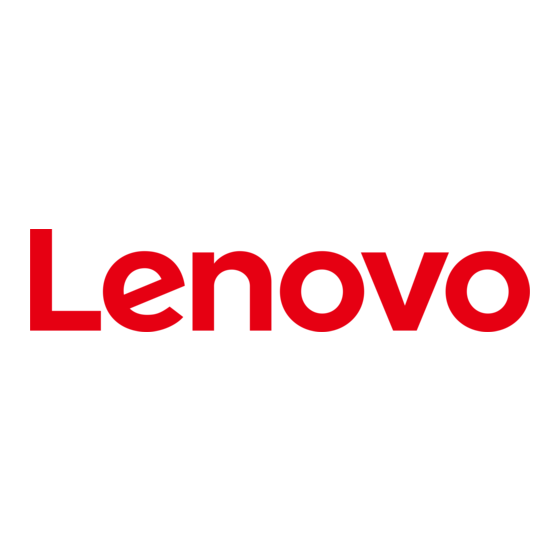Lenovo ThinkAgile MX3321-H Руководство пользователя - Страница 19
Просмотреть онлайн или скачать pdf Руководство пользователя для Сервер Lenovo ThinkAgile MX3321-H. Lenovo ThinkAgile MX3321-H 34 страницы.

• Scope: [Platform]
• Memory Mode [%]: 0
• Persistent Memory Type: [App Direct]
These values are selectable options for DCPMM settings, and do not represent the current DCPMM
status.
In addition, you can take advantage of a memory configurator, which is available at the following site:
http://1config.lenovo.com/#/memory_configuration
Alternatively, set DCPMM Goals with the following commands in OneCLI:
1. Set create goal status.
onecli.exe config set IntelOptaneDCPMM.CreateGoal Yes
--imm USERID:[email protected]
2. Define the DCPMM capacity that is invested in system volatile memory.
onecli.exe config set IntelOptaneDCPMM.MemoryModePercentage 20
--imm USERID:[email protected]
Where 20 stands for the percentage of capacity that is invested in system volatile memory.
3. Set the DCPMM mode.
onecli.exe config set IntelOptaneDCPMM.PersistentMemoryType "App Direct"
--imm USERID:[email protected]
Where App Direct stands for the DCPMM mode.
– Persistent Memory Type
In App Direct Mode and Mixed Memory Mode, the DCPMMs that are connected to the same processor
are by default interleaved (displayed as App Direct), while memory banks are used in turns. To set
them as not interleaved in the Setup Utility, go to Intel Optane DCPMMs ➙ Goals ➙ Persistent
Memory Type [(DCPMM mode)], select App Direct Not Interleaved and reboot the system.
Note: Setting DCPMM App Direct capacity to not interleaved will turn the displayed App Direct regions
from one region per processor to one region per DCPMM.
• Regions
After the memory percentage is set and the system is rebooted, regions for the App Direct capacity will be
generated automatically. Select this option to view the App Direct regions.
• Namespaces
App Direct capacity of DCPMMs requires the following steps before it is truly available for applications.
1. Namespaces must be created for region capacity allocation.
2. Filesystem must be created and formatted for the namespaces in the operating system.
Each App Direct region can be allocated into one namespace. Create namespaces in the following
operating systems:
– Windows: Use Pmem command.
– Linux: Use ndctl command.
– VMware: Reboot the system, and VMware will create namespaces automatically.
After creating namespaces for App Direct capacity allocation, make sure to create and format filesystem
in the operating system so that the App Direct capacity is accessible for applications.
• Security
– Enable Security
.
Chapter 2
Hardware removal, installation and management guidelines
15
